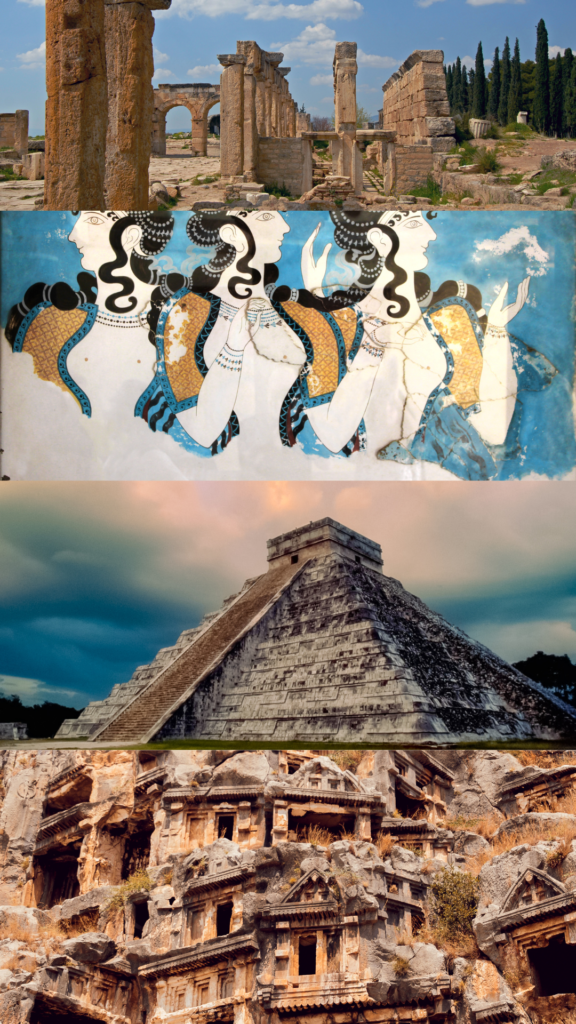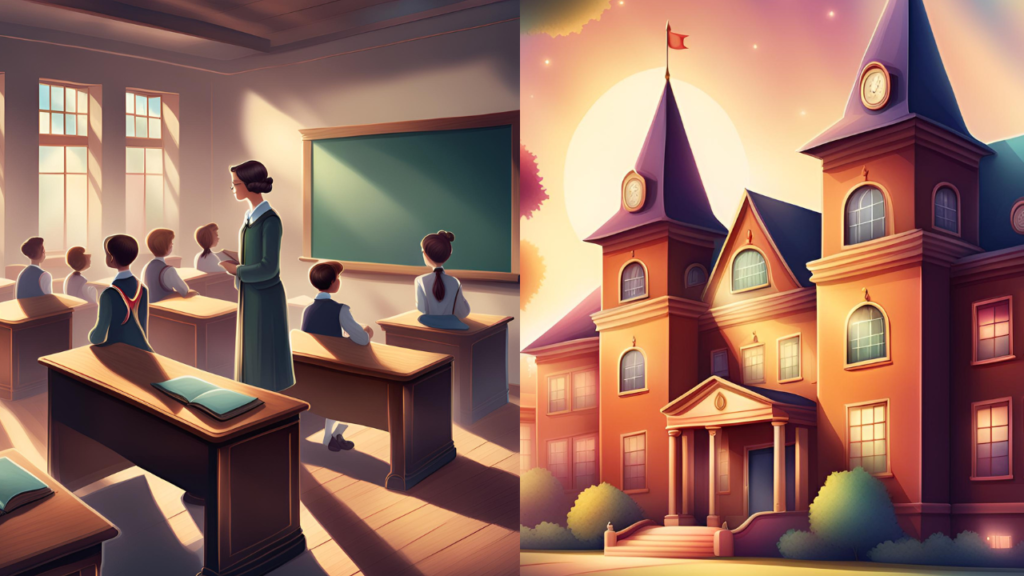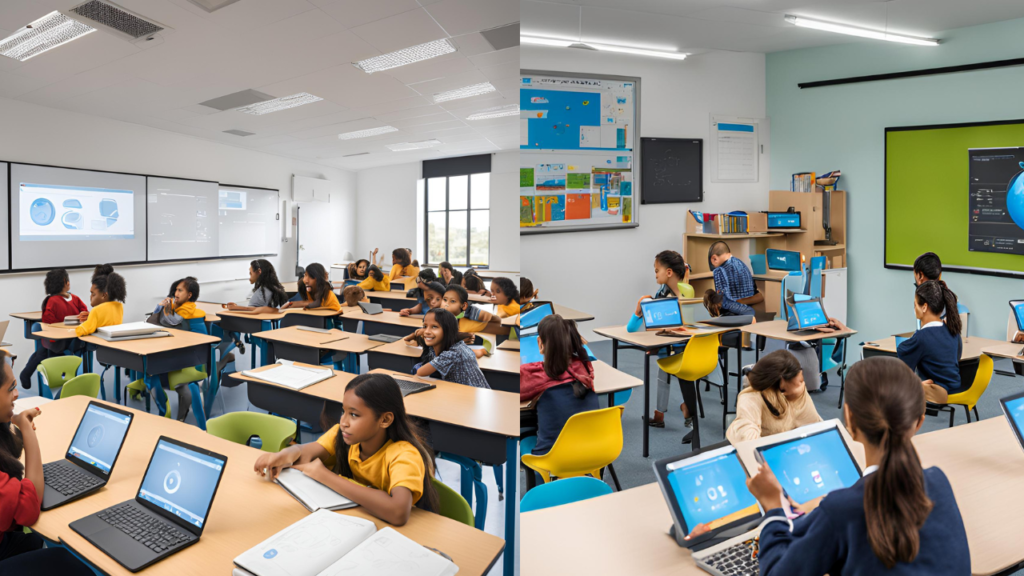What is school?
Schools are foundational institutions in any society, serving as the primary step for formal education. Schools are the places where children and adolescents spend a significant portion of their early lives acquiring knowledge, developing skills, and building social relationships.
In my opinion, the value of education goes well beyond just providing students with a basic education; schools are essential in assisting people in becoming capable, informed, and responsible members of society.
From the ancient academies of Greece to the modern, technologically advanced classrooms of today, schools have evolved significantly. Yet, their core mission remains the same: to educate and nurture young minds that will drive the future.
My This article explores the multifaceted world of schools, examining their historical roots, structural variations, curricular frameworks, and their various roles in students’ lives and society.
By delving deeply into these aspects, we gain a deeper understanding of the vital role schools play in individual and community development. Be it the traditional classroom or the rise of online education, the essence of school education lies in its ability to adapt and respond to the changing needs of society, ensuring that every generation is well-equipped to face the challenges and opportunities that lie ahead.
Historical Perspective:
Origins of Formal Education

The concept of formal education dates back to ancient civilizations, where structured learning environments began to take shape. In ancient Mesopotamia, schools known as “edubba” were established for scribes to learn writing, mathematics, and record-keeping. Similarly, ancient Egypt had temple schools where priests taught writing, mathematics, and religious texts.
Ancient Greece is often credited with the birth of formal education in the Western world. Philosophers such as Socrates, Plato, and Aristotle laid the foundations for educational theory and practice. Plato’s Academy, founded around 387 B.C., is one of the oldest known institutions of higher education.
Development through different civilizations
Roman Empire: The Romans built on Greek educational practices, emphasizing rhetoric, grammar, and public speaking.
Education was divided into stages, including ludus for basic education, grammaticus for secondary education, and rhetor for advanced studies.
Medieval Europe: During the Middle Ages, monastic and cathedral schools became the primary centers of learning. These institutions preserved and disseminated knowledge, especially religious and classical texts. The establishment of universities such as the University of Bologna (1088) and the University of Paris (1150) marked significant advances in higher education.

Islamic Golden Age: In the medieval Islamic world, education flourished with the establishment of madrasas and libraries. Scholars made significant contributions to science, mathematics, medicine, and philosophy.
Institutions such as al-Qarawiyyin in Morocco (founded in 859) and al-Azhar University in Cairo (founded in 970) became renowned centers of learning.
Renaissance and Enlightenment: The Renaissance era saw renewed interest in classical knowledge and humanism, leading to educational reforms and the establishment of schools that emphasized the liberal arts.
The Enlightenment advanced education as a means of individual and social progress, leading to the rise of state-sponsored schooling systems.
Modern Education System
Industrial Revolution: The need for a skilled and literate workforce led to the expansion of public education. Compulsory education laws were enacted in many countries, ensuring that children received basic schooling.
Progressive Education Movement: In the early 20th century, educators such as John Dewey advocated experiential learning and a student-centered approach. This movement emphasized critical thinking, creativity, and the development of the whole child.
Post World War II Era: The global expansion of education was driven by the belief that education was essential for economic growth and social stability. International organizations such as UNESCO played a key role in promoting educational access and quality around the world.

The 19th and 20th centuries saw the formalization of national education systems around the world. Major milestones include:
Today, education systems continue to evolve, incorporating technological advancements and innovative pedagogical methods. The historical journey of schooling reflects the enduring importance of education in human society, highlighting its role in shaping individuals and driving social progress.
Structure and Types of Schools
Levels of Education
- Primary/Elementary Schools
- Definition: The first stage of formal education, typically for children aged 5 to 12.
- Curriculum: Focuses on basic subjects such as reading, writing, mathematics, science, and social studies.
- Purpose: Lays the foundation for lifelong learning and development.
- Secondary/High Schools
- Definition: The stage following primary education, usually for students aged 12 to 18.
- Curriculum: Includes more advanced subjects and electives such as languages, arts, physical education, and vocational training.
- Purpose: Prepares students for higher education, employment, and responsible citizenship.
- Higher Education (Colleges and Universities)
- Definition: Institutions providing post-secondary education, including undergraduate, graduate, and professional programs.
- Curriculum: Offers specialized courses and degrees in various fields of study.
- Purpose: Equips students with advanced knowledge and skills for professional careers and academic research.

Types of Schools
- Public Schools
- Definition: Schools funded and operated by government authorities.
- Characteristics: Free or low-cost education, diverse student populations, and standardized curriculums.
- Purpose: Provide accessible education to all children regardless of socioeconomic status.
- Private Schools
- Definition: Schools funded by tuition fees, donations, and private organizations.
- Characteristics: Often have smaller class sizes, specialized programs, and distinct educational philosophies.
- Purpose: Offer alternative education options that may align with specific values, beliefs, or academic goals.
- Charter Schools
- Definition: Publicly funded schools that operate independently of the traditional public school system.
- Characteristics: Greater flexibility in curriculum design, teaching methods, and administration.
- Purpose: Provide innovative educational approaches and alternatives to conventional public schools.
- International Schools
- Definition: Schools that follow international curricula, such as the International Baccalaureate (IB) or Cambridge programs.
- Characteristics: Serve expatriate families and local students seeking a global education.
- Purpose: Prepare students for higher education and careers in an international context.
- Homeschooling
- Definition: Education provided by parents or tutors at home.
- Characteristics: Customized learning experiences, flexible schedules, and individualized attention.
- Purpose: Cater to specific educational needs, family values, or unique learning styles.
- Online Schools
- Definition: Educational institutions that deliver courses and programs through the internet.
- Characteristics: Offer flexibility, accessibility, and a wide range of subjects and degrees.
- Purpose: Provide education options for students who require non-traditional learning environments due to various circumstances.
Special Education Schools
- Definition: Schools designed to meet the needs of students with disabilities or special educational requirements.
- Characteristics: Offer tailored curriculums, specialized staff, and support services.
- Purpose: Ensure that all students receive an equitable education and reach their full potential.
Vocational and Technical Schools
- Definition: Institutions focused on providing practical skills and training for specific trades and careers.
- Characteristics: Emphasize hands-on learning and industry-specific competencies.
- Purpose: Prepare students for immediate entry into the workforce and successful careers in technical fields.
The diverse structure and types of schools reflect the varied needs and goals of students and societies. Each type of school offers unique advantages and caters to different aspects of personal and academic development.

Curriculum and Pedagogy
| Category | Details |
|---|---|
| Core Subjects | Language Arts: Reading, writing, literature, language studies; Develops communication skills, critical thinking |
| Mathematics: Arithmetic, algebra, geometry, calculus; Focuses on problem-solving, logical reasoning | |
| Science: Biology, chemistry, physics, earth sciences; Encourages inquiry, experimentation | |
| Social Studies: History, geography, civics, economics; Fosters civic awareness, cultural understanding | |
| Physical Education: Physical fitness, health, wellness; Promotes physical health, teamwork | |
| Electives | Arts: Visual arts, music, theater, dance; Encourages creativity, expression |
| Technology: Computer science, coding, digital literacy; Prepares for tech-driven world | |
| Foreign Languages: Language learning beyond primary language; Fosters global awareness, communication skills | |
| Vocational Courses: Practical skills in carpentry, culinary arts, automotive repair; Prepares for specific careers | |
| Teaching Methods | Traditional: Lecture-based learning, textbook instruction, standardized testing |
| Modern: Project-based learning, inquiry-based learning, flipped classroom, blended learning | |
| Role of Technology | Digital Classrooms: Interactive whiteboards, tablets, laptops |
| Online Resources: Educational websites, videos, e-books | |
| Virtual Learning Environments: Platforms like Moodle, Google Classroom | |
| Educational Apps and Games: Engaging tools for interactive learning | |
| Innovative Approaches | Differentiated Instruction: Tailoring to diverse learning styles |
| Collaborative Learning: Group work and peer learning | |
| Experiential Learning: Field trips, internships, hands-on experiments | |
| Competency-Based Education: Mastery of specific skills, knowledge | |
| Assessment and Feedback | Formative Assessment: Ongoing assessments (quizzes, discussions, peer reviews) |
| Summative Assessment: End-of-unit evaluations (final exams, standardized tests) | |
| Feedback: Written comments, one-on-one meetings, rubrics, peer assessments |
I think this table format provides a clear and concise overview of the curriculum and pedagogy elements.

Student Life and Extracurricular Activities
| Category | Details |
|---|---|
| Academic Life | Daily Routines: Structured schedules including classes, breaks, and study periods |
| Classroom Activities: Interactive lessons, group discussions, presentations | |
| Homework and Assignments: Reinforces learning, develops time management skills | |
| Assessments: Quizzes, tests, projects to evaluate understanding and progress | |
| Extracurricular Activities | Sports: Athletics, team sports, individual sports; Promotes physical fitness, teamwork, discipline |
| Arts and Culture: Art clubs, music bands, theater groups; Fosters creativity, expression, cultural appreciation | |
| Academic Clubs: Debate, science clubs, language clubs; Enhances subject interest, critical thinking | |
| Community Service: Volunteer work, social projects; Encourages civic responsibility, empathy | |
| Student Government: Leadership roles, organizing events; Develops leadership, organizational skills | |
| Special Interest Groups: Robotics, environmental clubs, coding clubs; Supports niche interests, innovation | |
| Benefits of Extracurricular Activities | Personal Development: Builds confidence, resilience, and social skills |
| Skill Enhancement: Provides practical experience, enhances skills outside academic curriculum | |
| Social Connections: Facilitates friendships, networking, and sense of belonging | |
| College and Career Preparation: Adds to college applications, builds resumes, explores career interests |
I think This table format provides a structured overview of the components of student life and extracurricular activities, highlighting the importance of a balanced education that includes both academic and non-academic pursuits.
Final Thoughts
Education is a multifaceted journey encompassing the historical evolution of schools, diverse structures and types of educational institutions, and the comprehensive curriculum and pedagogical methods employed.
Schools not only provide academic knowledge but also play a crucial role in personal development through extracurricular activities and fostering social skills.
Future of Education: As you know the world continues to evolve, so too must our educational practices. Embracing technological advancements, innovative teaching methods, and continuous professional development for educators will be key to meeting the needs of future generations. thanks






